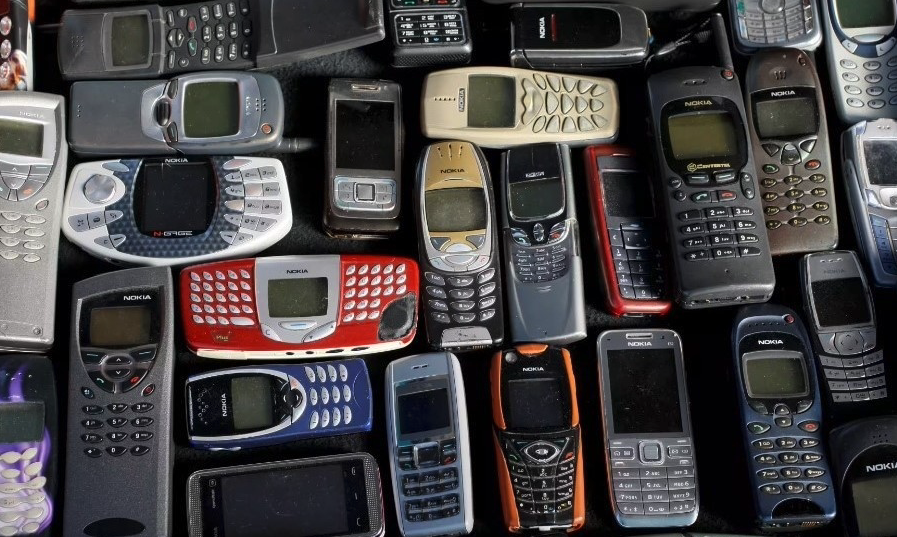Over 89,600 mobile subscribers spreading spam calls blocked in six months
Five major mobile service providers - Viettel, VinaPhone, MobiFone, Vietnamobile, and the virtual network
As of March 1st, 2024, mobile phones in Vietnam that only support 2G technology and are not on the approved certification list published by the Telecommunications Quality Testing Center will no longer be allowed to access the network. This marks another major step in Vietnam's process of shutting down its aging 2G network.

The 2G network first launched in Vietnam in the early 2000s and revolutionized mobile connectivity in the country at the time by enabling basic voice calls and SMS text messaging. However, as technology has advanced significantly over the past two decades, the 2G network is now outdated and unable to support modern mobile applications and internet-based services.
To facilitate Vietnam's ongoing digital transformation, major mobile network operators in the country such as Vinaphone, Mobifone, and Viettel had previously committed to phasing out 2G services by 2025 as part of their spectrum license renewals with the Ministry of Information and Communications. Transitioning users to newer 3G and 4G networks will free up valuable spectrum bandwidth that can be re-allocated to deliver higher speed mobile broadband to consumers.
In line with the planned 2G network shutdown schedule, the Telecommunications Quality Testing Center under the Ministry of Information and Communications recently published a list of mobile phones that are certified for continued usage after March 1st, 2024. Only devices on this approved list, which is available online at https://tqc.gov.vn/2g-only, will be permitted to access 3G/4G networks going forward if they currently only have 2G functionality.
This certification ensures that connected devices meet standards for network interoperability, radio frequency emissions, and other technical requirements to avoid potential interference issues on higher generation mobile networks. Any 2G-only phones not on the approved list will lose network access from this date onward.
Phasing out older 2G networks brings significant advantages for Vietnamese mobile users. Firstly, it encourages the adoption of more advanced smartphones capable of utilizing modern internet-based applications and services. According to statistics, the average smartphone price in Vietnam has dropped below 300,000 VND in recent years, making upgrades more affordable to consumers.
Secondly, removing outdated 2G networks helps free up scarce wireless spectrum in densely populated areas for 3G/4G/5G technologies. This translates to improvements in data speeds and connectivity quality for activities like video streaming, online gaming, mobile work and education access. It also positions Vietnam's telecom infrastructure for future innovations like IoT, AI and more immersive experiences.
A smoother transition to modern mobile networking is also expected to curb the menace of unsolicited spam SMS messages, which were predominantly transmitted over older 2G protocols. With most users migrating to higher generations of connectivity, the business case for SMS spamming diminishes.
To ensure a responsible shutdown that protects existing users, Vietnam's telecom authorities have devised a staggered timetable for withdrawing 2G services:
By September 2024, when the 900MHz spectrum license expires, mobile operators are targeting to have transitioned all subscribers off 2G-only plans/devices.
From September 2024 to September 2026, existing 2G networks will remain operational but no new 2G subscriber activations are permitted.
After September 2026, the 2G networks will be fully decommissioned.
This multi-year phase out approach allows sufficient buffer time for customers still reliant on 2G to replace aging handsets with more affordable smartphones compatible with 3G or 4G networks.
For users currently facing disruption to their 2G services, they can visit nearby mobile operator service centers to receive support in upgrading devices or migrating to postpaid/prepaid plans compatible with newer networks. As an interim solution, they can also use other phones like a relative's device to contact operator hotlines for assistance.
Telecom experts have welcomed Vietnam's decision to diligently follow through on its planned 2G shutdown schedule. According to Mr. Doan Quang Hoan, Vice Chairman of the Vietnam Society of Electronics, Telematics and Automatic Control, "Encouraging smartphone adoption, especially since quality phones are now available for under 300,000 VND in Vietnam, is appropriate. However, network operators should still maintain a gradual 2G withdrawal process to protect consumers."
In summary, Vietnam's strategy to retire outdated 2G infrastructure on a predefined timeframe aligns with global best practices and will ultimately benefit citizens through an expanded digital experience and ecosystem. While short-term challenges may arise for some remaining 2G users, the proactive coordination between authorities, operators and industry will help ensure a well-managed transition. This marks another positive step for Vietnam in its goal of fully embracing next-generation connectivity nationwide.